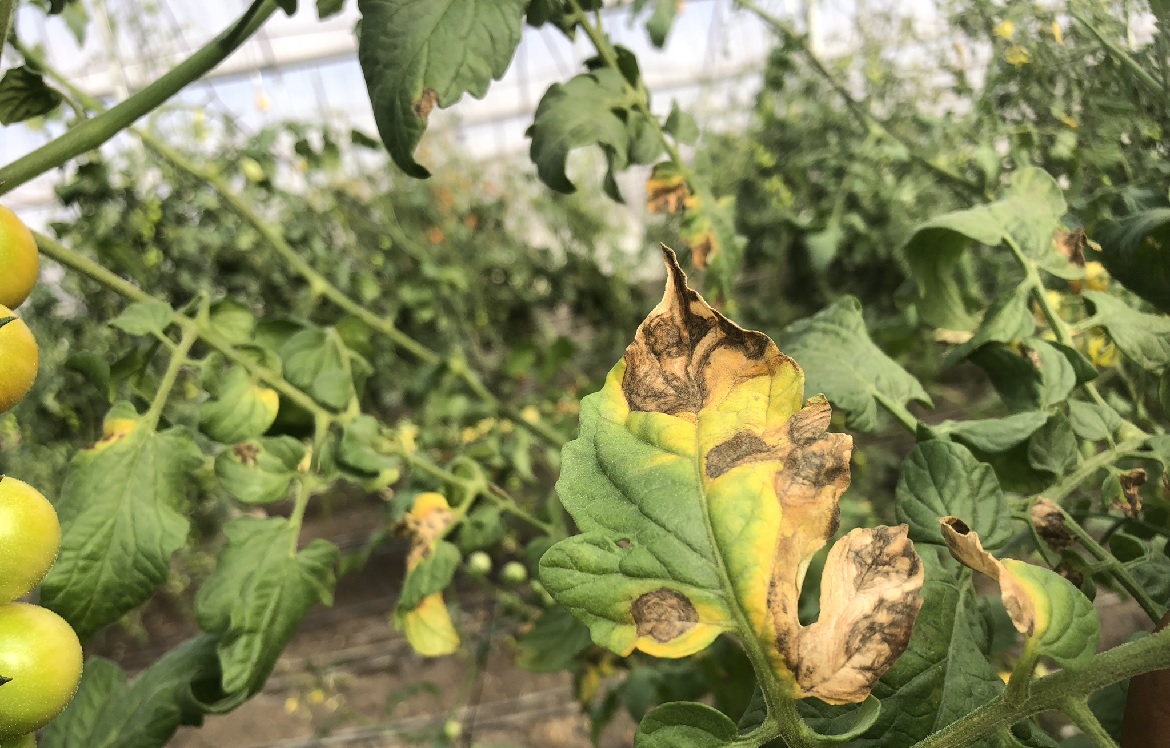
By George Munene
Early blight is one of the common and hazardous tomato diseases. It however also hits potatoes, peppers and eggplants. It is caused by a fungus; Alternaria solani.
Symptoms
- The first tell that your plants are affected by early blight are dark spots on the underside of older leaves near the ground
- These spots then turn brown. They are concentric, up to half an inch in diameter
- The spots grow larger and yellow, forming a ‘bull’s eye’ pattern on foliage
- The leaves eventually completely wither and turn brown, they drop off or hang onto the stem
- Fruits nearer to the stem are first to be infected by early blight. They develop leathery black lesions that are raised and concentric
- Severely infected fruits rot and drop off
Prevention, Management/ Treatment
Early blight thrives over the rainy season, and in areas with 15-27 °C, it is even more of a problem when temperatures hit 28-30 °C with humidity levels over 90 per cent; these are the optimum conditions for the fungi to flourish
Related News:Farmer who quit maize for tomatoes earns six times more
Cultural controls
- Use of resistant cultivars (Resistance doesn’t denote immunity, rather, these varieties are more able to ward off early blight)
- Buy seeds from an accredited agro-dealer, inquire about what variety offer the most resistance to early blight in your region
- Use authenticated seeds for planting. Alternatively, ensure that the seeds you collected for planting are pathogen free
- To prevent the spread of disease causing spores to the rest of the healthy plants, pluck out, burn/bury infected plants
- Rotate out crops of the solanaceae/nightshade family for at least one planting season
- Use the recommended amount of fertiliser and manure to ensure your crops are vigorous which gives them some measure of disease resistance
- Do not work on your farm when it has just rained, your crop has been irrigated or is dewy—this only serves to spread the fungi’s spores
- Disinfect your pruning shears/knife with a 1:4 bleach to water mixture after dealing with infected plants to avoid spreading the fungi to other healthy crops.
- Keep the plant dry by opting for a drip rather than overhead irrigation system
- Keep the soil at the base of the plants free of debris. You can use mulch or organic compost as a barrier preventing the spores from splashing back up on the vegetation
- Use the appropriate spacing during planting and stake your tomatoes/ capsicums/ eggplants. This helps avoid contact between plants. It also allows for proper air circulation, preventing the creation of humid conditions which keep leaves and stems wet allowing for fungal build-up
- A vinyl film that absorbs ultra violet light has been shown to reduce incidences of early blight in greenhouse grown tomatoes by up to 50 per cent
- Fermenting your tomato seeds. This keeps them viable for up to six years but also helps rid them of seed-borne diseases
Related News:Adding crushed egg shells to the soil and watering thrice a week controls blossom end rot in tomatoes
Related News:Loitoktok farmer growing multiple crops to organically control pests, diseases and weeds
Organic treatments
- Garlic treatment—blend 10 cloves of garlic in one pint of water and strain the mixture. Use this mix as a foliar spray
- Mix in one tablespoon of the baking soda/baking powder into a litre of water with some droplets of soap or vegetable oil to make the mixture adhesive
Commercial organic treatments for early blight are mainly copper based fungicides. These are the store bought cures for early blight available to Kenya’s organic farmers:
- Champ Flo SL distributed by Anset International Ltd (specifically for tomatoes)
- Cobox 50 WP-Kijani Agencies Ltd (vegetables)
- Copper Nordox-Farmchem (K) Ltd (vegetables)
- Cuprocaffaro Micro 37.5 WG- Farmchem (K) Ltd (potato and tomato)
- Cuptocaffaro WP-Farmchem (K) Ltd (potato and tomato)
- Isacop-Twiga Chemical Industries Ltd (potato and tomato)
- Nordox 75 WG-Farmchem (K) Ltd (tomatoes)
Tomatoes are delicate crops; if you are looking to grow organic produce, preventative measures will be even more important than curatives given the virulence of early blight.
















Comments powered by CComment